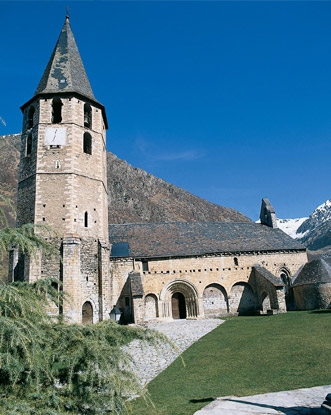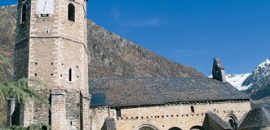Type: Church
Century: XII-XIII-XV
Architectural style: Romanesque-Gothic-Renaissance
Village: Salardú
Municipality: Naut Aran
The church of Sant Andrèu greets us with an external architectural image that is typical of the late Romanesque, approximately from the 13th Century; it has a basilica-type ground plan with triple-apse heading and tympanum-free facade. The SW angle has a 15th-Century belfry whose ground floor still retains a habitable dome and rib structure space. The outer perimeter of the church offers, on the border of the upper frieze, an ornate sculptural ensemble in the form of modillions.The facade, conceived as five decreasing arches protected by a dust-guard, is decorated basically with vegetable motifs; there is a Christ’s monogram embedded above the keystone of the arch.
Inside you will be struck by an elegant gothic architectural structure resting on square-base pillars and ribbed vaults. Near the presbytery is one of the most extensive and best-kept wall paintings of the Aran Valley; they are 17th-Century paintings depicting different personages and biblical scenes.The crowning moment of the visit to Sant Andrèu de Salardú is when you approach the central apse, where the majestic sculpture sculpture of the Christ of Salardú stands, the masterpiece of the Erill la Vall workshop, which is also believed to have authored the Christ of Mijaran. The piece shows the image of a suffering Christ, with triangular section of the legs and the characteristic features of Romanesque religious iconologies; it dates from the 12th Century.










